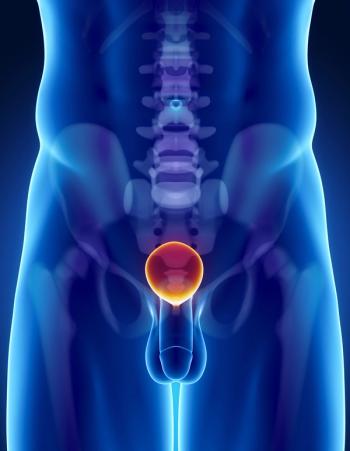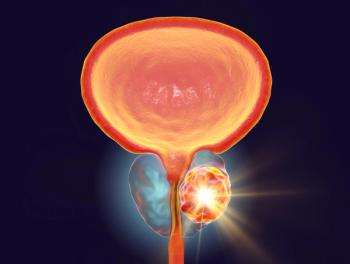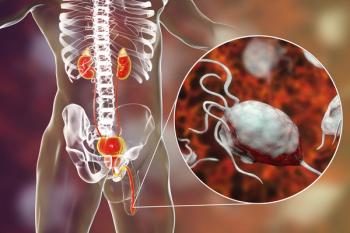
Oncology NEWS International
- Oncology NEWS International Vol 8 No 11
- Volume 8
- Issue 11
Survival Advantage for Simultaneous Goserelin and RT
VIENNA, Austria-Proof that starting adjuvant goserelin (Zoladex) treatment simultaneously with radiotherapy improves local control and survival in men with locally advanced prostate cancer emerged 2 years ago from a study conducted jointly by the Radiotherapy and Genitourinary groups of the European Organization for Research and Treatment of Cancer (EORTC).
VIENNA, AustriaProof that starting adjuvant goserelin (Zoladex) treatment simultaneously with radiotherapy improves local control and survival in men with locally advanced prostate cancer emerged 2 years ago from a study conducted jointly by the Radiotherapy and Genitourinary groups of the European Organization for Research and Treatment of Cancer (EORTC).
Now, the latest update from that phase III study indicates that the survival edge conferred by the combined modality approach is maintained for at least 5½ years of follow-up.
The EORTC investigators randomized 415 patients with T1-T2 grade 3 prostate adenocarcinoma or T3-T4 prostate adenocarcinoma of any grade to receive radiotherapy (50 Gy over 5 weeks followed by a 20 Gy boost over 2 weeks) alone or in combination with the LHRH analog goserelin (3.6 mg injected subcutaneously on the first day of radiation and every 4 weeks thereafter for 3 years).
At the 10th European Cancer Conference (ECCO 10), Michel Bolla, MD, of University Hospital, Grenoble (France), reported that, after a median follow-up period of 65.7 months, overall survival remained significantly better in patients who received radiotherapy and hormonal therapy than in those treated with radiotherapy alone (78% vs 62%, P < .001).
Significant benefits in favor of adjuvant goserelin treatment were likewise apparent for disease-specific survival (94% vs 79%, P < .001); biochemically defined disease-free survival (76% vs 45%, P < .001); and clinically defined disease-free survival (74% vs 37%,
P < .001), Dr. Bolla said. Combined treatment also significantly delayed the time to first clinical failure and the time to locoregional failure.
Articles in this issue
about 26 years ago
Anti-VEGF MoAb Promising in Phase II Renal Cancer Studyabout 26 years ago
Government Lawsuit Seeks Billions From Tobacco Industryabout 26 years ago
NCI Plans a Large Phase III Trial of Lymphoma Vaccineabout 26 years ago
NCCN Database Expanding to Include Cancer Pain Outcomesabout 26 years ago
Fewer Blacks Than Whites Receive Surgery for Early Stage Lung Cancerabout 26 years ago
NSABP Trial Examines Surgery’s Role in Breast Cancerabout 26 years ago
Congressional Spouses Honor Three for Cancer Preventionabout 26 years ago
Prophylactic Tamoxifen Debated at ECCOabout 26 years ago
NCCR Honors Seven Members of Congress as ‘Champions’about 26 years ago
Even With Coverage, Patients Avoid Clinical TrialsNewsletter
Stay up to date on recent advances in the multidisciplinary approach to cancer.

















































































